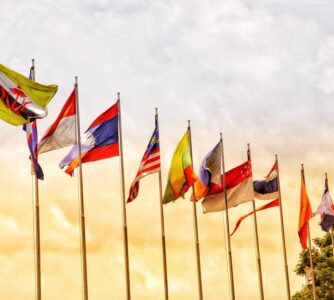ASEAN (Association of Southeast Asian Nations) is a group of ten states. The Founding Fathers are Adam Malik (Indonesia), Narciso Ramos (the Philippines), Tun Abdul Razak (Malaysia), S. Rajaratnam (Singapore), and Thanat Khoman (Thailand). On August 5th, 1967, these men signed the Bangkok Declaration. That was the founding document.
Before its creation, some of the countries had no diplomatic relations due to various conflicts. However, they had the will to overcome these differences and cooperate. In the Declaration, they made it clear that other states from the region could join. Brunei joined in 1984, Vietnam in 1995, Laos with Myanmar in 1997. Finally, Cambodia joined in 1999.
One of the reasons for its creation was the fear of communism. The main goal of ASEAN is to stimulate economic growth. However, the states also cooperate in topics such as culture and security. Since 1967, it has become one of the strongest and influential organizations worldwide. Besides, its free trade area is one of the largest in the world too.

Charter and Summit
In 2005, the states felt they needed to do more. They aimed for further integration and strengthening the organization. Hence, they formed a task force to draft a more explicit legal framework. They adopted the ASEA Charter in 2008.
The policy-making organ is the Summit, that meat twice a year. It consists of the heads of government or heads of state. Further, the Summit appoints a secretary-general. That is the leader of the organization. The home of the Secretariat is in Jakarta, Indonesia. Besides, the organization also has several advisory organs called Communities.
The ASEAN Way
That is not only the name of the official anthem but also a style of political approach. The basis of the method is to address problems in a non-conflict fashion. Some experts believe that through this concept, the states are capable avoid broader conflicts.

